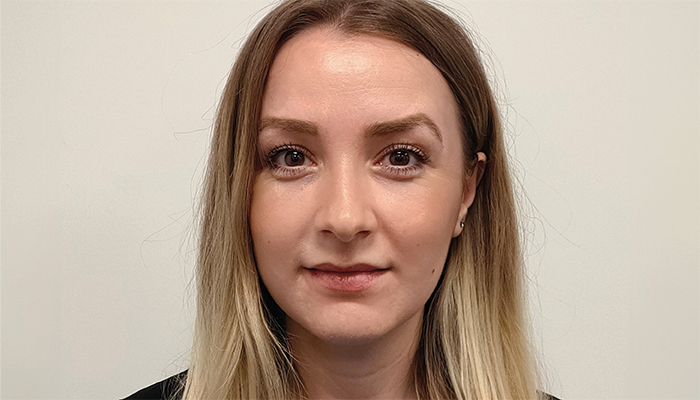Medtech polymers are used for various biomedical applications – as drug carriers, in tissue engineering, or even as building blocks for medical devices. Medtech polymers can be natural (for example, peptides and polysaccharides) or synthetic (for example, aliphatic polyesters and vinyl polymers). But whatever the origin, they must be biocompatible to avoid immune reactions and toxic side effects, and biodegradable for some applications. To ensure medtech polymers meet these requirements, thorough characterization is crucial.
To explore the challenges – and solutions – in medtech polymer analysis, we spoke with experts and collaboration partners Julien Nicolas, CNRS Director of Research at the Galien Paris-Saclay Institute, France, and Snežana Đorđević, Application Scientist at TOSOH Bioscience.
Why is it important to characterize medtech polymers?
Julien Nicolas: Medtech polymers are designed with the goal to be administered and used in a living organism, for instance under the form of nanoparticles. So, it is important that we first ensure they are of extremely high purity and quality – which is why we put an emphasis on their characterization. We need to make sure that there are no impurities or any residual solvents. Characterizing these polymers can also help us determine if they have the properties we are looking for; for example, in terms of functionality, composition and mechanical properties. For instance, if polymer chains are too long, they may accumulate in the body and lead to toxicity; but if polymers are too short, they may be excreted too rapidly, without inducing any therapeutic effects. We have to be certain they have all the right properties.

Julien Nicolas

Snežana Đorđević
What analytical techniques are commonly used in the field?
Nicolas: In our lab, we use nuclear magnetic resonance (NMR) – specifically proton and carbon NMR. This technique works well for characterizing polymers in terms of global composition and modifications of the chain ends. In some cases, if we do not have visible protons from the chain end, we can have access to their chain length, which is a crucial parameter.
We also employ size exclusion chromatography, which enables us to study the distribution of the different molecular weight species. Another method we use in our lab is asymmetrical field flow fractionation – which is a good alternative to SEC because it offers additional versatility and flexibility; however, it is limited in other ways.
What are the main analytical challenges in medtech polymer characterization?
Nicolas: Polymers are a mixture of macromolecules, which makes the characterization rather complex. The challenge is to have access to the most accurate data possible. For instance, make sure they have the same characteristics from one polymer chain to another, to minimize heterogeneity as much as possible. Another challenge is to determine their purity as precisely as possible, which is also very important from a regulatory perspective.
How does TOSOH Biosciences help tackle challenges in medtech polymer characterization?
Snežana Đorđević: When it comes to polymer analysis, we offer more than just instruments. TOSOH was originally a chemical company – we have 90 years of in-house experience in polymer synthesis, which means that we are fully aware of the challenges faced by scientists like Professor Nicolas. In fact, these challenges led us to develop our SEC instruments. Initially, these instruments were just for internal use, but, when we realized how robust our instruments were, we decided to make them available for everyone. Today, we are able to offer full support to our clients: from whole instrumentation sets, down to smaller analytical components, such as our SEC columns, which can be adapted for the separation of a wide range of polymers. Our application scientists also enjoy sharing their polymer analysis expertise and experience with customers.
How does TOSOH partner with industry and academia in medtech polymer analysis?
Đorđević: This field is complex and it’s growing really fast. We’re seeing an increasing number of new polymer types, which are getting more difficult to characterize. And that’s why it’s really important for us to collaborate with academics like Professor Nicolas – to break new ground with SEC. We also work with graduate and postgraduate students, who collaborate with our application scientists as part of their projects. In this way, we can share our knowledge and expertise in SEC with academia and help them answer their research questions in biopolymer analysis; in return, they provide us with really important feedback on our products. Indeed, this approach allows us to continue improving instruments and developing new models.
What tips and tricks – or lessons learned – can you share here?
Đorđević: The first piece of biopolymer analysis advice I offer is: “Do not shake or vortex your samples!” This process can lead to degradation – especially if you have a really high molecular weight polymer, like hyaluronic acid. I also advise using a combination of techniques – do not rely on just one. When it comes to the analytical methods, it is typical to start your analysis with NMR, but I would suggest screening your data with DLS and finally confirm your results with SEC. And last but not least, take care of your instruments.
We understand that polymer analysis requires a lot of time – and patience. And that’s why we always emphasize communication with our clients; the help that we provide with regard to instrumentation maintenance and troubleshooting often saves our users a lot of time in the long run.
Any final thoughts on the future of the medtech polymer field?
Nicolas: There is a plethora of new and exciting polymers in development, but, given that we are dealing with materials that are ultimately intended for administration in patients, I would like to emphasize the vital importance of accurate characterization. Accuracy is the key to understanding whether or not a new polymer has the right properties – whether it has the potential to ultimately change a patient’s life. To do this, we need fast, easy to use, and robust instruments to produce high-quality analytical data.
Đorđević: I totally agree on the importance of accurate instrumentation for polymer analysis! I would also add that it is equally important to know which techniques to use and when. Unfortunately, in a field as complex as biopolymer analysis, it isn’t as simple as injecting a sample and reading the results. You need to understand at a high level the core of your technique and the ultimate goal of your research to get reliable results. If you’re not quite there yet, that’s not a problem – you just need to know who to ask! TOSOH is here to help; we have a range of experts focusing on polymer analysis – including natural and synthetic polymers. We will always find a solution – whether in the form of products or in the form of technical support from an application scientist like me. There is no harm in recognizing that you are not an expert in a certain area – just ask for assistance and we will offer you all the support you need!


